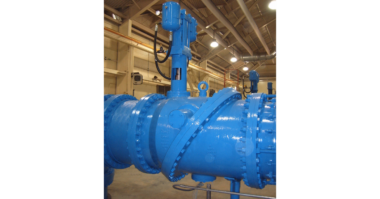Gaskets come in many shapes and sizes and are generally used to create a seal between two or more stationary parts of a mechanical assembly. In most cases, gasket selection and installation is done based upon temperature of the media, desired pressure, and the compatibility of the gasket material with the media as well as the application. Gaskets come in metallic, semi-metallic, non-metallic, and even liquid materials.
Gasket Selection
Many experts suggest that gaskets should be selected for their properties in the following order:
- Temperature – Media temperature at the gasket should be considered first in most scenarios. This criteria also reduces the number of possible gaskets quickly, especially in applications where temperatures go from 200°F up to 1000°F and over. A gasket should be able to handle extended periods at the desired temperature without its performance declining.
- Application / Flange – Gaskets are often used in flanges such as flat or raised face, or ring joint. The material used to comprise the gasket and bolt specifications are also important. The bolt load and gasket contact area account for the compressive load available to create a proper seal. The gasket should have enough strength to resist crushing under the load, along with maintaining its integrity when installed.
In general, gasket materials should be selected as follows:
- Solid Metal Gaskets – used for flanges of ASME B16.5, ASME B16.47, and API Specification 6A
- Hollow Metal Gaskets – used for mechanical seals with a max temperature of cryogenic to 1000°C
- Corrugated Metal Gaskets – used for valves, pumps, flanges, heat exchangers, and vessels.
- Semi-Metallic Gaskets – used for flanges of ASME B16.5, B16.47, B16.20 and for boilers, autoclaves, gas mains, pumps, and valve bonnets
- Non-Metallic – made of rubber, graphite, PTFE, and more, they are used for a wide range of applications
- Liquid Gaskets – These compounds are applied to create a seal and usually are comprised of silicon that can withstand temperatures of -59°C to 329°C
- Media and Pressure – Certain materials in gaskets may not work in conjunction with different types of media. Likewise, some types of gaskets may not be able to maintain their integrity in high or low pressure applications.
Gasket Installation
Most gaskets come with instruction manuals, as do the equipment in which they are being installed. It is essential to follow installation instructions to ensure correct installation and to avoid “voiding” the warranty of the equipment.
In general, the steps to install a gasket include:
- Removal of surrounding components
- Face cleaning
- Face inspection
- Alignment inspection
- Inspection of the old and new gasket
- Gasket installation
- Lubrication of the bolts
- Tightening of the bolts
- Testing of the equipment
Remember that when selecting and installing a gasket, do not skimp or cut corners. Spending the time and funds to replace a series of gaskets correctly is far less expensive than having to shut down and replace just one that was chosen or installed incorrectly.
If you have a question about selecting or installing gaskets, post your question in our Industry Forum!





Comments